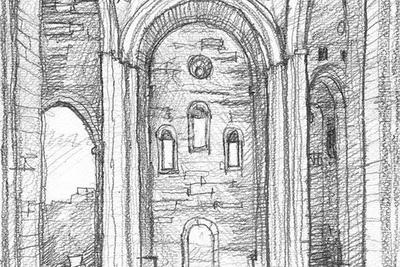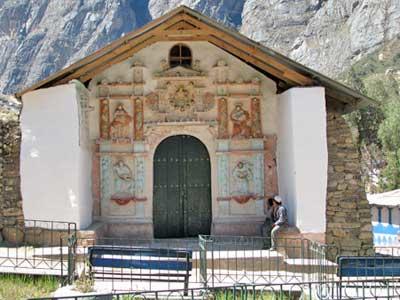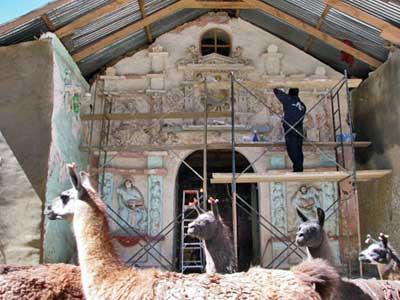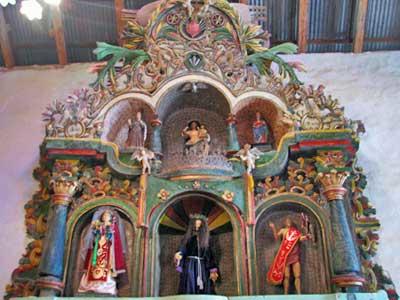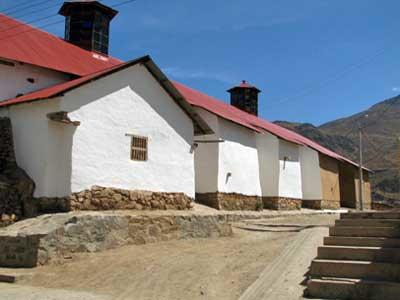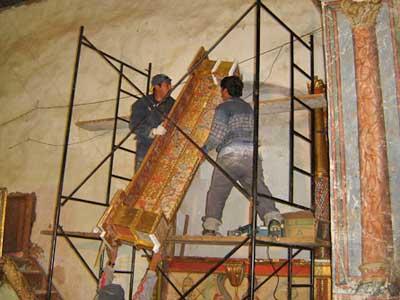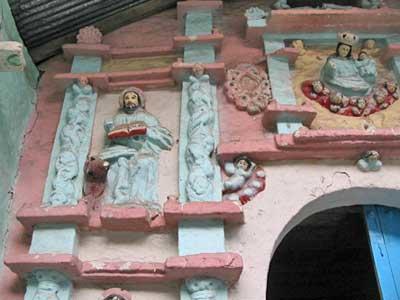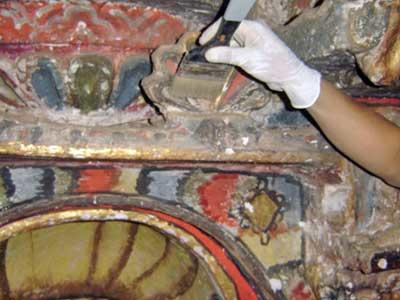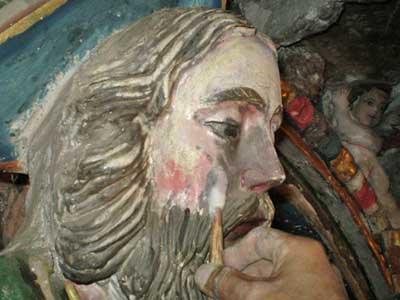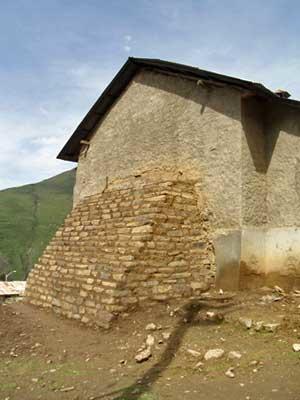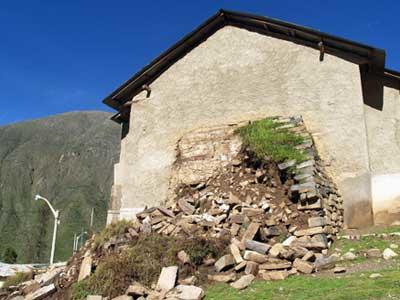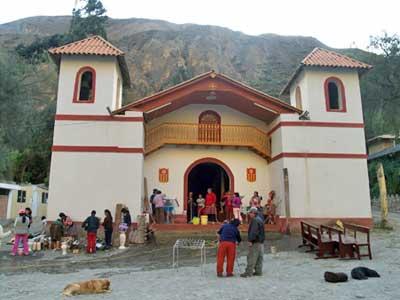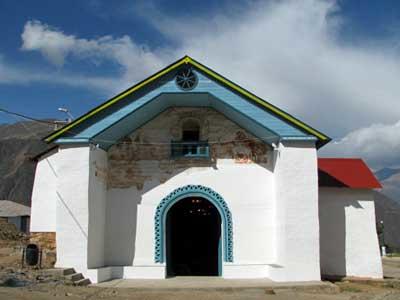Oyón Valley Missionary Chapels
How We Helped
Oyón Valley Missionary Chapels
Background
The 40 surviving chapels in the Oyón Valley were built in the late sixteenth and early seventeenth centuries as part of a Spanish program to convert Peru’s indigenous population to Christianity. Built of adobe, the chapels represent a rich vernacular architecture and many contain vivid mural paintings, ornate polychrome altarpieces, and coffered wood ceilings. It is believed that each structure originally had a freestanding bell tower and a large, open-air porch, though many of these are now gone. Although much of the original building fabric of the chapels has survived over the centuries, period earthquakes have damaged and weakened many of the structures. Seismic cracks allow for water ingress, producing excessive moisture, which in turn contributes to the deterioration painted surfaces such as walls and altarpieces. Aggravated with neglect and unsympathetic repairs using modern building materials like concrete rather than adobe, these fine examples of rural religious architecture are fading from the cultural landscape, having never been studied from a historical or artistic point of view.
How We Helped
The Oyón Valley Missionary Chapels were included on the 2002 World Monuments Watch to raise awareness of their plight. In 2004, WMF, through its Robert W. Wilson Challenge to Conserve Our Heritage, conducted an inventory of the churches, as well as documentation of conditions and implementation of emergency interventions at several sites. The churches surveyed included San Austín de Canín, San Pedro de Tongos, San Bartolomé de Picoy, Virgen de la Asunción de Oyón, Maria Magdalena de Pachangara, San Pedro de Naván, Huacho sin Pescado, San Bartolomé de Curay, and San Antonio de Lancha. In 2007, WMF, through the Wilson Challenge, contributed to the cleaning, consolidation, and reintegration of polychrome painted surfaces and conservation of architectural elements in seven of the churches. The churches included in this phase of work were San Martin de Taucur, Andajes, la Chimba, Nava, Quichas, Mallay, and Rapaz. WMF had previously supported another project in Rapaz, the conservation and stabilization of San Cristobal de Rapaz Church. The first phase of work was completed in 2009.
Why It Matters
The chapels’ artistic value and architectural style are unique to the central Andean region of Peru. Each church has a distinct plan and decoration, and collectively the chapels represent an important era in Peru’s history. The study and conservation of these chapels has provided a greater understanding of the artistic significance of these cultural sanctuaries in rural Peru.

